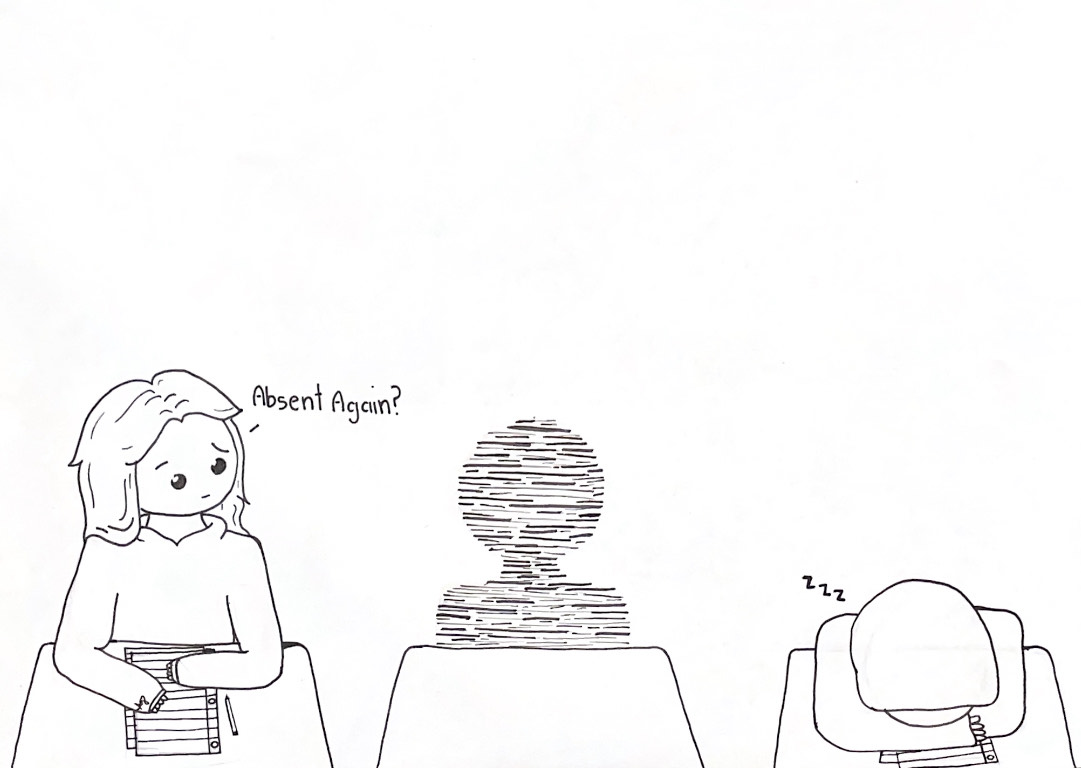It is a truth universally acknowledged that chronic absenteeism has been on the rise in the past few years. Chronic absenteeism, as defined as missing 15 or more days a school year according to the US Department of Education, has gone from 13% in the 2019-2020 school year to 26% in the 2022-2023 school year across the nation. In just Washington, we have also gone from 15% in 2018 to an astonishing 30% in 2023.
It is made increasingly clear that this is also a local issue when we see our classmates mysteriously disappearing and skipping classes. According to the New York Times, the rate of chronic absenteeism in Northshore School District has gone from 9% in 2019 to 20% in 2023.
It’s not just the students who notice this issue; many teachers and administrators have also taken notice of the unsavory amount of absences. Jennifer Ligot, a teacher at North Creek, claims that she sees students being chronically absent “fairly frequently…especially in seventh period,” she said.
Ligot believes that students would rather be absent from school because “some of it is stress. Some of it is ‘I want to finish my day early.’ Some of it is students skipping classes that they find to be difficult. Some of it is avoidance of test dates and project turn-in dates. Some of it is wanting to spend time with friends instead of going to class. There are a lot of different reasons why this might be happening.”
Additionally, being online during the pandemic may also be to blame for the alarming increase in absent students. “As an administrative team, we also see how increased student access to class resources since the pandemic (Schoology, StudentVue, etc.) has led to students thinking they can just do their work online or at home instead of prioritizing attending class,” says Assistant Principal Bryan McNiel. “We have some ideas about how to advise teachers set things up in Schoology next year to provide some resources but still reserve essential things to be done during class time to encourage attending.”
Ligot also contributes to the idea of encouraging attendance by adding: “I’ve heard that [cutting down material on Schoology and other platforms is] something that is on the docket for our school leadership team to talk about in the fall, when we’re coming back. I don’t know that any specific decisions have been made around that, but I know it’s a topic of discussion,” she said.
As for why students should come to school to learn in the first place, Ligot expresses her own opinion by explaining that “We need to be very good at communicating the benefits of being here together. And that students need to value what they get from their content expert, and that they need to value what they can learn from each other. And that they should also continue to value what they can do by themselves…so we need to value each other as a community just as much as we value our own independence.”
And as for those students who thrive in online learning environments and believe they don’t need the school community in order to learn, Ligot proposes that we should put forth “some other education opportunities for the district should be providing those educational opportunities for students who are in that situation.”
The voice of a student learning and living in the North Creek community is also important. “Usually, I feel like I’m mostly unaffected by this and I don’t mind, but it doesn’t feel very good when I have group work with those people, since I won’t be able to work with them much,” said Spencer Shek, a sophomore at North Creek.
At the end of the day, being chronically absent doesn’t just affect those who don’t come to school. Although we shouldn’t criticize those who are absent, since they may have more pressing matters to attend to during the time they are not at school, we also should recognize that chronic absenteeism also touches the lives of other students in the student body. Thus, the North Creek administration must find a way to encourage students to attend school again in order to give a satisfactory conclusion to this nationwide issue.











